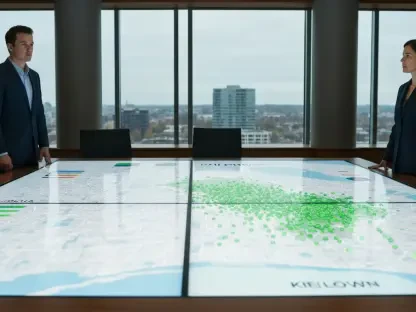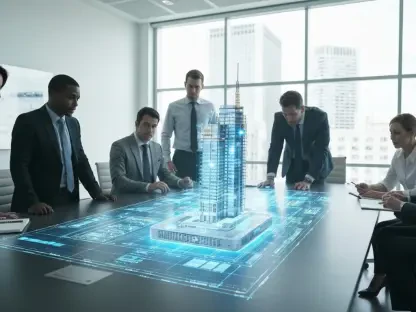The HVAC and Fire Protection Insulation Market stands as a cornerstone of modern construction, underpinning critical aspects of energy efficiency, climate control, and safety in buildings across the globe, while its specialized materials for heating, ventilation, air conditioning systems, and fire-resistant solutions witness significant expansion. Market projections indicate a rise from USD 8.85 billion in 2025 to USD 12.5 billion by 2035, driven by a steady compound annual growth rate of 3.5%. Far from being an optional add-on, insulation has become an essential component in meeting the demands of contemporary infrastructure. This article delves into the powerful forces behind this growth, exploring regulatory pressures, technological advancements, and global trends that are shaping the trajectory of this vital industry. From urbanization to sustainability goals, the factors at play reveal a complex yet promising landscape for stakeholders in construction and beyond.
Forces Fueling Market Expansion
The surge in the HVAC and fire protection insulation market is propelled by several compelling drivers that reflect broader societal and regulatory priorities. A dominant force is the global emphasis on energy efficiency, as governments worldwide implement stringent building codes to curb energy waste. Materials such as mineral wool and fiberglass play a pivotal role in minimizing heat loss or gain, directly contributing to reduced utility costs and lower carbon emissions. This focus on efficiency is not merely a trend but a mandate in many regions, pushing builders and developers to integrate high-performance insulation into their projects. The financial and environmental benefits of these solutions are undeniable, positioning them as a key investment for both new constructions and retrofitting efforts in existing structures. As energy costs continue to rise, the demand for effective insulation to optimize building performance is expected to grow even further.
Another critical driver lies in the heightened awareness of fire safety, particularly in densely populated urban environments where the risks are amplified. Fire-resistant insulation materials are increasingly sought after to comply with international safety standards, especially in high-risk settings like commercial towers and industrial facilities. These materials act as a protective barrier, slowing the spread of flames and providing crucial time for evacuation and response. The push for compliance is evident in stricter regulations that mandate the use of such products in both new builds and renovations. Beyond regulatory requirements, there is a growing recognition among property owners and developers of the need to safeguard occupants and assets, further accelerating the adoption of fire protection insulation. This dual focus on energy savings and safety underscores the indispensable role of insulation in modern building design.
Urbanization and the Push for Sustainability
Rapid urbanization, particularly in emerging economies, is reshaping the demand for HVAC and fire protection insulation on a massive scale. In regions like Asia-Pacific, countries such as China and India are experiencing a construction boom fueled by population growth and infrastructure development. This surge creates an enormous need for insulation solutions to support everything from residential complexes to sprawling industrial parks. The sheer volume of projects underway in these areas highlights the market’s potential, as builders seek materials that ensure climate control and safety in increasingly crowded urban spaces. Moreover, the pace of development often outstrips the availability of skilled labor, adding pressure to find efficient, easy-to-install insulation options. The intersection of rapid growth and practical challenges makes this a dynamic area of opportunity for industry players.
Parallel to urbanization is the rising tide of sustainability in construction practices, which is redefining material choices in the insulation market. There is a noticeable shift toward eco-friendly and recyclable products as part of a broader commitment to combat climate change. Green building certifications and environmental regulations are encouraging the adoption of insulation that minimizes ecological impact without compromising performance. This trend is not limited to specific regions but is a global movement, with developers and architects prioritizing solutions that align with long-term sustainability goals. The challenge lies in balancing cost with environmental benefits, as sustainable materials can sometimes carry a higher price tag. Nevertheless, the momentum behind green construction suggests that demand for such innovations will continue to shape the market, driving research into materials that offer both efficiency and a reduced carbon footprint.
Innovations Transforming the Industry
Technological advancements are revolutionizing the HVAC and fire protection insulation sector, offering solutions that meet the evolving needs of modern construction. Innovations such as nanotechnology-enhanced materials are improving thermal efficiency and fire resistance, providing superior performance compared to traditional options. These cutting-edge products are designed to withstand extreme conditions while maintaining a smaller environmental footprint, addressing both practical and regulatory demands. The integration of technology into insulation is not just about performance but also about adaptability, allowing for tailored solutions in diverse building types. Manufacturers are keenly aware of the competitive edge that such advancements provide, investing heavily in research to stay ahead in a rapidly changing market. This focus on innovation signals a future where insulation is smarter and more effective than ever before.
Another area of progress is the development of smart insulation systems, which incorporate sensors and adaptive features to optimize energy use in real time. These systems represent a leap forward in building management, enabling precise control over indoor environments while minimizing waste. The appeal of such technology is particularly strong in commercial and industrial sectors, where operational efficiency translates directly to cost savings. However, the adoption of these advanced systems is not without challenges, including higher upfront costs and the need for specialized installation expertise. Despite these hurdles, the potential for smart insulation to transform how buildings are designed and operated is immense. As technology continues to advance, the industry is likely to see even more groundbreaking solutions that push the boundaries of what insulation can achieve in terms of safety and sustainability.
Obstacles to Overcome in Market Growth
Even with a promising outlook, the HVAC and fire protection insulation market faces significant barriers that could slow its momentum. One pressing issue is the volatility in raw material costs, particularly for components like polymers and mineral wool, which are subject to global supply chain fluctuations. Such unpredictability can render insulation products less affordable, especially in regions where budget constraints are a primary concern. This challenge disproportionately affects emerging markets, where cost sensitivity often dictates purchasing decisions. Manufacturers must navigate these economic pressures by exploring alternative materials or streamlining production processes to maintain competitive pricing. Without such adaptations, the risk of reduced market penetration looms large, particularly in areas where demand is high but resources are limited.
Installation complexities present another formidable obstacle, as advanced insulation systems frequently require skilled labor for effective implementation. In many emerging economies, a shortage of trained professionals can delay projects and increase costs, hampering the adoption of cutting-edge solutions. This issue is compounded by the need for ongoing training to keep pace with new technologies and materials entering the market. Additionally, environmental concerns add another layer of difficulty, as some traditional insulation products struggle with recyclability and ecological impact. Striking a balance between high performance and sustainability remains a critical focus for the industry. Addressing these challenges will require collaborative efforts, including investment in workforce development and innovation in material science to create products that are both effective and environmentally responsible.
Regional Trends and Market Potential
Geographic variations play a significant role in shaping the HVAC and fire protection insulation market, with distinct dynamics evident across different regions. North America stands out as a leader, driven by a strong commitment to energy-efficient building practices and rigorous fire safety regulations. The region’s mature construction sector, coupled with a culture of compliance, ensures a steady demand for high-quality insulation materials. This market strength is further supported by incentives for retrofitting older buildings to meet modern standards, creating a robust cycle of investment and innovation. While challenges like cost remain, the region’s focus on long-term savings through efficiency continues to drive growth, positioning it as a benchmark for others to follow.
Europe mirrors this trend with its own emphasis on sustainability, largely influenced by directives from the European Union aimed at reducing energy consumption. Policies promoting green buildings have accelerated the adoption of advanced insulation solutions, particularly those with low environmental impact. Meanwhile, Asia-Pacific emerges as the fastest-growing region, fueled by massive urbanization and infrastructure projects. The construction boom in countries like China and India translates into soaring demand for insulation to support everything from smart cities to industrial hubs. These regional differences highlight a global market with diverse opportunities, where local regulations, economic conditions, and cultural priorities shape growth patterns. Understanding these nuances is essential for industry players aiming to capitalize on untapped potential across various geographies.
Pathways Forward for Industry Advancement
Reflecting on the journey of the HVAC and fire protection insulation market, it’s evident that the sector has navigated a landscape of opportunity and challenge with notable resilience. The push for energy efficiency and fire safety has cemented insulation as a non-negotiable element of construction, while urbanization in key regions has driven unprecedented demand. Technological breakthroughs have begun to redefine performance standards, even as hurdles like raw material costs and installation barriers test the industry’s adaptability. Looking ahead, the path to sustained growth lies in strategic innovation—developing cost-effective, sustainable materials that meet stringent global standards. Collaboration between manufacturers, policymakers, and training programs will be crucial to address labor shortages and ensure seamless adoption of advanced solutions. As the market evolves, prioritizing scalability and environmental responsibility will shape a future where insulation not only protects buildings but also contributes to a more sustainable world.









